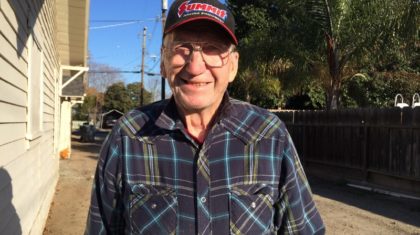
by Tom Millar, Planner, Alta Planning + Design
If you’ve been in the business of pedestrian and bicycle planning for very long, chances are you’ve seen a really great plan “sit on the shelf” and languish without implementation. Momentum is usually built in a community during plan development. Often, a finite window of opportunity exists after plan completion to carry this momentum forward. For some cities, the momentum built during the planning process can be seamlessly carried forward, but for others it can be much more of a challenge due to issues like departmental structure, technical expertise, political will, and others. How do we fix this?
Enter the “AfterCare” program, a term coined by Jim Price, Bike/Ped Coordinator for the Mountainland Association of Governments (MAG) in Utah. Jim has been instrumental in lining up funding for the cities within his MPO boundaries to create Bicycle and Pedestrian Master Plans. He realizes the importance of immediate post-plan implementation success and in order to facilitate it, MAG gave Alta a modest contract to essentially be on-call to answer questions and provide resources to the cities Alta had already helped create and adopt master plans.
Many city engineers and planners need help with the tricky aspects of implementation, such as intersection striping for bike lanes, protected bike lane design, or trade-offs between travel lane space, parking, and space for bicycles. They may also need advice about how to best address the inevitable concerns that arise when communities begin to put serious emphasis on walking and bicycling. The AfterCare program gives them immediate access to a ready source of expertise, keeping things moving so that they don’t get stuck and lose momentum. It’s a great value for MAG because the cities have the tools to be more successful, creating a wider base of experience and knowledge, and resulting in accelerated build-out of the region-wide bike/ped network. The program also appeals to the cities because MAG covers the very modest cost for Alta’s assistance. The AfterCare model could work for any type of agency, but it works particularly well for MPOs, DOTs, transit districts, air quality management districts, counties, and other organizations that serve as umbrella agencies working with multiple municipalities.
To date, Alta has assisted MAG with the following AfterCare projects:
- Guidance on how to handle bicycles needing to cross a severe skew-angle railroad crossing near a commuter rail station
- Guidance on implementing back-in angle parking adjacent to a planned bike lane
- Bike boulevard implementation
- Buffered bike lane and conventional bike lane striping concept plans, with particular emphasis on intersections
- Conceptual guidance on implementing protected bike lanes on a street where a city planned to apply to the MPO for future funding (the application was approved for several million dollars of funding in 2017–2018)
- Conceptual guidance for protected bike lanes on another corridor where developers are currently building subdivisions that will require them to build out the street frontages



With AfterCare, Alta has been able to be more involved in implementation, offer up-to-the-minute, state-of-the-practice guidance, develop deeper relationships with clients, and ensure that the vision and momentum gained during the master planning period does not go to waste. Helping these communities defend their plans, reach their goals, make progress, and transform their communities one project or policy at a time is enjoyable for the client, for decision makers, and for us as consultants. Take the time to consider an AfterCare program in your community.


